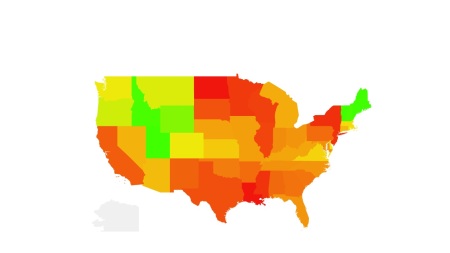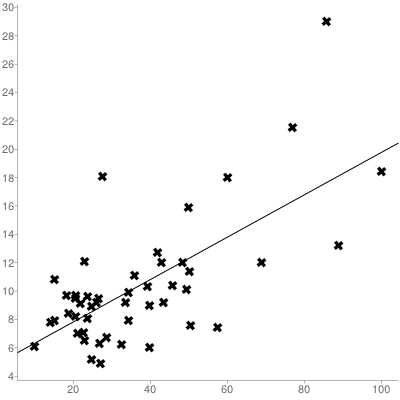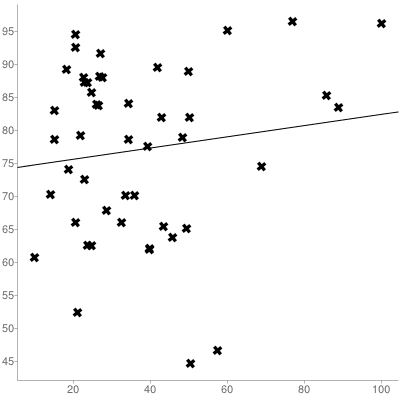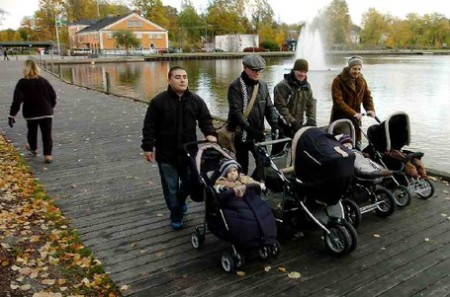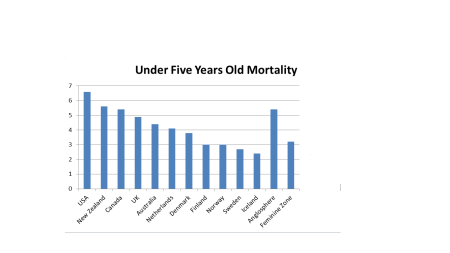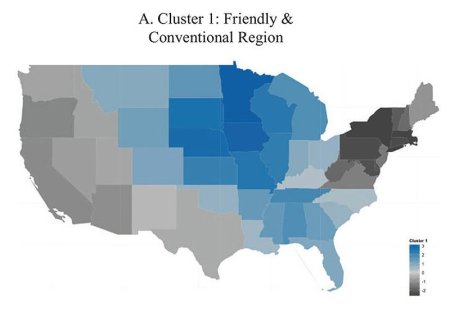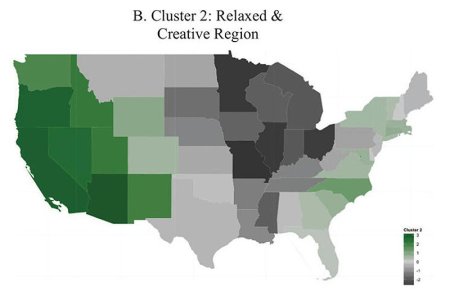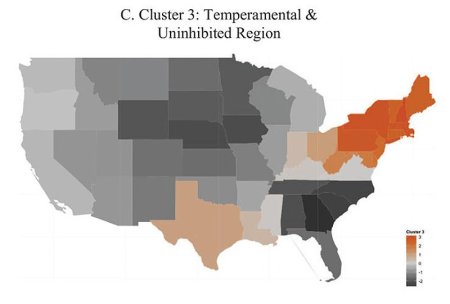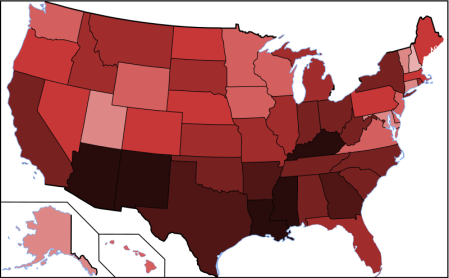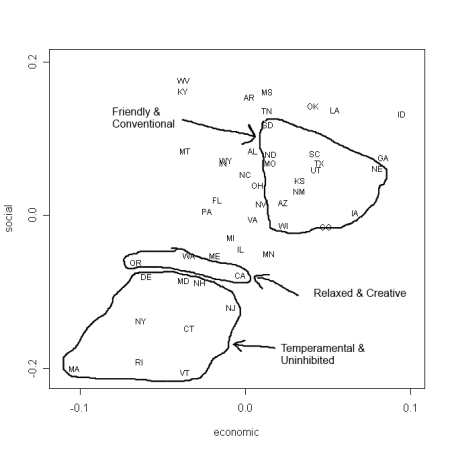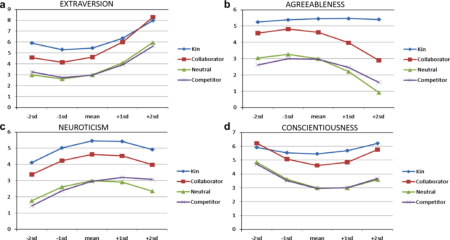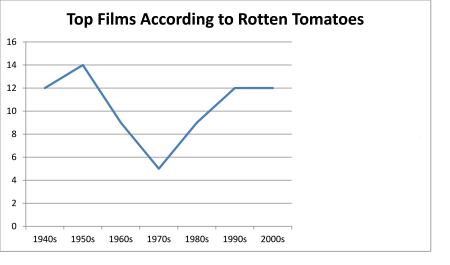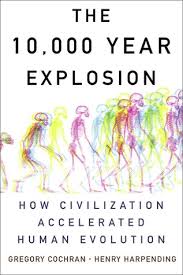
I have a feeling most people don’t read reviews, but with some books I still think it’s worth making a little noise. Books like The Blank Slate by Steven Pinker, The Nurture Assumption by Judith Rich Harris, and The Righteous Mind by Jonathan Haidt. And now this one, so yes, it’s kind of a big deal. Many readers of this blog are no doubt already familiar with it, but since some probably aren’t, and it has been ignored by most of the media, I feel I should throw my two cents in.
The Persistence of Blank Slatism
The authors, physicist Greg Cochran and anthropologist Henry Harpending, challenge a common view among both the public and in Academia that evolution ended some 50 thousand years ago after the exodus out of Africa, or that it’s too slow to have any meaningful impact on humans within that time period. For that reason we must, they claim, be the same biological creatures as we were back then. As a consequence of this view, the cultural diversity that we see today and throughout history must also be unrelated to biology. They quote the late biologist and popular science writer Stephen Jay Gould who sums up (and embraces) this opinion,
“Everything we call culture and civilization we’ve built with the same body and brain.”
Most of his readers gladly accept this as the truth. It is after all the Blank Slate that has dominated Western thought on human nature for the last 400 years or so that claims we are all built of the same stuff, we all share an incredible ability to change, improve, and evolve. Steven Pinker did some damage to this idea but most people who have read him seem to have landed in a half slatism, admitting they were wrong but only half wrong. In psychology, this is known as anchoring: people don’t change opinion to fit the evidence but meet the evidence half way. And ironically you can be as anchored in thinking you’re a free spirit as in any other point of view.
But “the same body”? Are there Japanese people who can be mistaken for Scandinavians? Are there Peruvians who could pass themselves off as Nigerians?
More likely, as the authors argue, is that when leaving Africa humanity spread to various different environments, each with its own unique selective pressures. East Asians (to be) who passed through the extremely cold climate of central and northern Asia got shorter extremities. They and northern Europeans became paler as they were less exposed to the sun and they lost the ability to retain salt while sweating as they sweated less in their new environments. The people of the Andes and Himalayas became adapted to high altitude, and so on.
In short, our bodies are not the same. There are plenty of differences that are obvious adaptations to new environments giving rise to slightly different variants of Homo sapiens. And there are no supernatural elves guarding the blood-brain barrier either; the brain, for all its sophistication and complexity, is still part of our body, so anyone seeking the truth about human nature must at least entertain the possibility that evolution may have produced mental, biologically based group differences.
The Upper Paleolithic Revolution
There is little doubt that something big happened around 45 thousand years ago. At this time all sorts of innovations pop up – bow and arrow, fishnet and fishhook, cooking, rope, basket, textiles. Other novelties such as art, music, trade, and ritual burials indicate that there was a sudden and fundamental shift in human thinking, away from the day-by-day living of roaming bands, towards a more reflective, planned and organized way of life.
This abrupt change is hard to understand in terms of natural selection as there is very little time and no signs of strong selective pressures. In fact it seems so hard to understand it that many scholars deny it altogether. Instead, they argue for a gradual development by showing cultural artifacts that predates that of the Great Leap Forward, as it’s sometimes referred to. But I think it’s clear that they make their case more with words than with actual evidence. The extent to which they ascribe ingenuity and artistic qualities into the artifacts predating the Great Leap is similar to how some mothers will praise the scribblings of their children. As geographer and science writer Jared Diamond pointed out in another interesting book, gradualists have a tendency to give fancy names to early primitive tools as a way of creating an appearance of continuity,
Early stone tools vary in size and shape, and archaeologists have used those differences to give the tools different names, such as ‘hand-axe’, ‘chopper’, and ‘cleaver’. These names conceal the fact that none of those early tools had a sufficiently consistent or distinctive shape to suggest any specific function, as do the obvious needles and spear-points left by the much later Cro-Magnons. Wear-marks on the tools show that they were variously used to cut meat, bone, hides, wood, and non-woody parts of plants, but any size or shape of tool seems to have been used to cut any of those things, and the tool names applied by archaeologists may be little more than arbitrary divisions of a continuum of stone forms.
So most likely there was a Big Leap, and a corresponding biological leap that enabled it. But what kind of biological change could have such a dramatic effect?
The Neanderthal Within
As I said earlier, natural selection is not a likely candidate. The change is just too large and rapid, even if the new environments presented strong selective pressures and humans had lots of pre-existing genetic variation to work with. And clearly the new environment did not set the Neanderthals already living there on a highway to any kind of cultural revolution.
Instead the authors suggest that the change was caused by interbreeding between the Homo sapiens leaving Africa and the Neanderthals who lived in Europe and Asia. These two species split up some half a million years ago and Cochran & Harpending point out that no primate species have split completely in such a short time. And as human population genetics shows, people who live next to each other will inevitably mix to some extent. So common sense dictates that interbreeding was very likely.
This way Homo sapiens could have picked up a number of advantageous gene variants almost instantly. Most likely some of these variants relate to language skills (it’s very hard to think of something like trade without some kind of language). One such candidate gene is the FOXP2 that involved in speech, another suggested by the authors is MCPH1 that regulates brain size, as these both have new versions that roughly fit the time when Homo sapiens met Neanderthals and the cultural explosion that followed.
Since this book was written in 2009, you may wonder how well the theory holds up in view of current evidence. Well, recently gradualists have seized on a piece of depictive cave painting in Sulawesi, Indonesia, estimated to be around 35 thousand years old. They argue that this find somehow makes their case, but I honestly can’t see how it would do that. It leaves plenty of time for Homo sapiens to leave Africa, pick up the crucial Neanderthal gene variants in the Middle East or Europe and then migrate to Southeast Asia. And fact remains that advanced artifacts, such as depictive paintings, are still only found in times and places where people are likely to have Neanderthal admixture.
Meanwhile the evidence for interbreeding, doubted by gradualists like anthropologist Sally McBrearty, is now pretty solid. Recent studies also indicate that the authors were slightly off regarding the time line as it appears that interbreeding happened just before the window of opportunity would have closed. The FOXP2 is also ruled out as a Neanderthal contribution to contemporary humans. But the main point is that it did happen and that and non-Africans (Neanderthals were never in Africa) worldwide now have a few percent Neanderthal DNA as a consequence. So thus far, their theory is holding up pretty well.
Hyperevolution
This, however, isn’t even the main point of the book. The Upper Paleolithic Revolution is just the starting point of a new chapter in human evolution. Cochran & Harpending argue that the cultural innovations that emerged around 50 thousand years ago created selective pressures that were much stronger than those already in place so that we evolved faster than before. Sure, innovations had no patents back then so they were accessible for all. But not everyone was equally skilled at using them. If you’re good with a bow and arrow you’ll shoot the game from a safe distance, if you’re less skilled you’ll have to get closer and take the higher risk. But that would still be preferable to getting up close and bludgeoning it to death with a club, which seems to have been the Neanderthal way.
Language, as the authors point out, may well be the most important cultural innovation of them all, and no doubt one creating an enormous selective pressure. With good language skill you can excel at trade, you can convince, seduce, and deceive as well as detect deception. You can make detailed plans together with others. All of this confers obvious fitness – in proportion to your skill level. And thus far we don’t know of any skills that aren’t highly heritable. So if you agree that language and other cultural innovations have been of great importance to our success and survival in our recent past, then you must also agree that the genes behind the corresponding skills would have been selected for in proportion to that success. These skills then changed how we think which must have led to further innovations, “Men made better tools and then, in turn, were reshaped by those tools over many generations.” This of course must have been going on since the dawn of humanity. But with the Upper Paleolithic explosion the process shifted gears.
Genetic Evidence
As plausible and common sense as this sounds, the authors also offer more direct evidence of recent selection. For instance that which is based on a phenomenon called recombination. Thing is, we don’t inherit single genes, instead chromosomes from our parents are cut into 2-4 pieces and half of these pieces from each parent are then put together – recombined – to make our own chromosomes. As the cuts are few and the chromosomes contain enormous stretches of DNA, it’s unlikely that a cut will be anywhere near a single gene. So when a favorable mutation starts spreading through a population its closest neighbors usually tag along, like the entourage of a rising star. Together they make up a characteristic pattern called a haplotype. The more advantageous the mutation is the more common the haplotype will become. But with every generation that passes the cuts in the chromosomes will reduce the length of the haplotype so that fewer and fewer genes around the mutation will be shared in the population. So while fitness is indicated by how common the haplotype is, age is indicated by its length (the longer, the younger).
This means that common and long haplotypes can only exist if there is still strong and recent selection. This is for instance the case with lactose tolerance among people of European ancestry, which is only a few thousand years old. But according to the authors, recent studies show plenty of long and young haplotypes, some of which have reached 100 percent frequency in their populations. This can only mean that there is both strong and recent selection on a large scale. So evolution is still going strong
They offer other types of evidence too, supporting the idea that the rate of evolution is accelerating, but this is the part I found most convincing.
Agriculture
Unlike the Upper Paleolithic Revolution, agriculture was a single innovation that emerged some 12 thousand years ago. But its impact on the course of evolution was probably at least as big. It increased the world population from ca 6 million to 600 million by the time of Christ. As mutations are proportional to the size of the population this means a hundred fold increase of new mutations to speed up evolution even more. But like any innovation promoting fitness it also created a selective pressure benefitting the most skilled farmers.
But it also meant a new diet, based heavily on grain. While more people could be fed this way, the diet itself was low on protein and other nutrients. Average height dropped almost five inches with the introduction of agriculture. This meant that any mutations that would somehow increase access to protein would be selected for as was the case with those rendering owners lactose tolerance. The mutations that enabled adults to consume dairy food spread like wildfire among early farmers. This is a very compelling piece of evidence of the process of gene-culture coevolution that the authors mean is the force that has created our human nature. Culture (in this case agriculture) created a selective pressure for lactose tolerance which then in turn affected our culture as our diet and food production changed. And all this in just a few thousand years. Do we have any particular reason to assume that this process wouldn’t affect our culture and our behavior in other aspects?
Personality: The Rise of the Nerds
I ask this because just like the Upper Paleolithic innovations made certain skills important so did agriculture. The former most likely brought complex speech and the ability to deceive. Before that life was probably no picnic, but there wasn’t much room for Dark Triad personality traits. Language, however, must have created a huge selective pressure for such traits. And with agriculture came new traits, since traits tend to correspond to skills. The hunter-gatherers didn’t need to make plans; they roamed, and they may have memorized certain places and routes where food was plentiful or where they could find shelter. As the authors point out, instant gratification would not be a problematic trait under those circumstances. But the farmer who ate just a little of the grain needed for next year’s sowing may well have sealed his and his family’s fate that way, especially a northern farmer.
Farming changed the whole way of life. It required making plans, collecting and evaluating information, and thinking ahead – sometimes years ahead. It required intelligence, true, but also a kind of personality captured by Big Five Conscientiousness, MBTI Thinking and Judgment, or the Cerebral factor of interests isolated by psychologist Peter Rentfrow and colleagues. These all refer to being rational, deliberate and careful. While this sounds like being intelligent none of these measures correlate with actual intelligence. It’s more similar to being nerdy. This cerebral/nerdy trait is most likely an even newer aspect of human personality than the Dark Triad.
What about the Pastoralists?
This begs the question of why people in the Middle East, who the authors argue should be the most adapted to agriculture, can be so unnerdy? They mention resistance to type 2 diabetes as an example of an adaptation to agriculture (a larger intake of carbs), but people in the Middle East have the highest prevalence of type 2 diabetes in the world. There is a possible explanation for this in the form of nomadic pastoralism. This culture emerged around 3000 years ago in the Middle East and remains strong right up to the modern era. So their experience of agriculture is interrupted and mixed with this other culture and corresponding diet, richer in meat. And since agriculture has been an accelerating process, cutting off 3000 years at the end means a whole lot more than at the beginning.
But pastoralism is more than an end of agriculture. It’s a cultural innovation with its own pressures, taking people in that culture down a different evolutionary path. This path leads to inbreeding, clannishness, honor culture and a warrior-like lifestyle. This is where I feel this book is lacking a conspicuous piece of the puzzle. It focuses too much on agriculture and gives the reader the impression that differences between populations are mainly about how long they’ve been farmers. They do mention it but mainly in the discussion of how early Indo-Europeans conquered the steppe with the edge of lactose tolerance. But if human nature has been shaped varying selective pressures of agriculture then the same should hold for pastoralists. (This type of human is described in some detail by blogger HBD Chick.)
Ashkenazi Intelligence
As a final example of just how fast the wheels of evolution are spinning, the authors present the rise of Ashkenazi intelligence. This would be a significant change in less than a millennia, which may be hard to believe in. But although speculative, it’s not a matter of belief, but of evidence and plausibility.
The Ashkenazi has existed as a distinct group of Jews since medieval times, but according to the authors their intellectual prominence is as late as the 1800s. Today their average IQ is estimated at 112-115. They have won more than 25 percent of all Nobel prices but make up only 0.17 percent of the world’s population. That is pretty mind-blowing. So how did it happen?
The cause, Cochran & Harpending suggest, is a well-known historical fact that most people simply don’t think of as relating to the theory of evolution,
“When persecution became a serious problem and the security required for long-distance travel no longer existed, the Ashkenazim increasingly specialized in one occupation, finance,
left open to them because of the Christian prohibition of usury. The majority of the Ashkenazim seem to have been moneylenders by 1100, and this pattern continued for several centuries. Such occupations (trade and finance) had high IQ demands, and we know of no other population that had such a large fraction of cognitively demanding jobs for an extended period.”
So they were effectively forced into high IQ professions and as success translated to more children this constituted a very strong and unique selective pressure that increased their intelligence. This sounds plausible, but while we know of their later achievements we don’t have any way to estimate their intelligence at the beginning of this period. The fact that they were sought after in the finance sector must mean that they had some smarts right from the start. As blogger Jewamongyou points out, in his overall positive review, religion may be an overlooked selective pressure, “It was specifically religious scholarship that made a man coveted as a husband.”
I have no idea of just how sexy Talmudic analysis was back then and to what extent those who excelled at it could extract resources to afford more children than others. But if this was the case then it certainly changes things a bit. It would weaken the case for superfast evolution, but the authors would still have a case for very fast ditto. How so?
Well, Ashkenazi Jews are a genetically distinct group with a number of serious genetic diseases. The popular explanation for this is that they at some point passed a bottleneck, a point when the population was so small that single individuals would leave their genetic mark on future generations. This has happened before but in this case the gene variants behind these diseases cluster together in regard to very specific functions of the brain and nervous system, DNA repair etc. A bottleneck would be random – no clusters.
Instead these clusters suggest that selection for something having to do with the brain – something that improves fitness – has taken place. And it would be recent selection as the genetic diseases are caused by homozygosity in these genes. Because in the long run adaptive genes with harmful side effects will be replaced by less harmful ones. So like haplotypes, harmfulness is another way of dating adaptations. And these diseases like for instance Tay-Sachs are among the worst imaginable.
So be it finance skills or perhaps religious fervor (that would surely give Richard Dawkins a stroke), there is still a case for some recent selection relating to intelligence.
Summary
Like I said in the beginning of this review, I think this book is among the top science books of recent years. It replaces the highly popular nonsense idea of halted evolution with a plausible theory of accelerating evolution. It provides a theory of how human nature has been shaped and differentiated into genetically distinct groups, not just by the physical environment, but increasingly by the social environment that various cultures represent, the most important factor being agriculture (or lack thereof). I still miss the pastoralist/clannish branch but maybe that will be in the next edition.
It would be easy to dismiss it had it not been so plausible and backed up by hard evidence. So the natural reaction from science journalists, pundits etc, the majority of whom still feel Stephen Jay Gould view is valid, is to ignore this book. Economist Tyler Cowen (who also doubted Homo sapiens interbreeding with Neanderthals despite of the common sense appeal of the idea) wrote a sweeping 14-line review, snubbing it without addressing anything specific, hardly more than a hit-and-run. One professor of biochemistry by the name of Larry Moran even tried to question the veracity of the Gould quote above, presumably hoping that fact checking is now a thing of the past. (Anthropologist John Hawks set him straight on that one).
I think this silence and these inferior attempts at dismissal speak volumes by themselves. If critics really had a good argument against Cochran & Harpending then surely they would use it. Given how the academic community tends to react to theories about heritability of intelligence and personality trait, innate group differences etc, I think they would use it much like a Neanderthal would use a club to bludgeon someone from an enemy tribe to death with. But don’t take my or anyone else’s word for it. It’s a short book, an easy read, and it only costs 10 dollars. If you’re a truly intellectually curious person, chances are you’ll get a good buzz from it. I certainly did.



 Posted by Staffan
Posted by Staffan 
